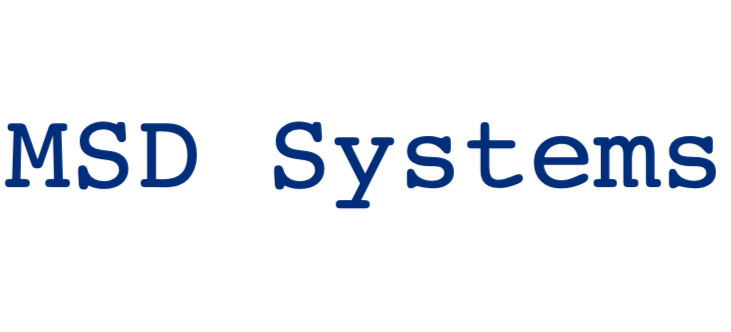What is Web Designing?
Web designing is the process of planning, conceptualizing, and implementing the plan for designing a website in a way that is functional and offers a good user experience. User experience is central to the web designing process. Websites have an array of elements presented in ways that make them easy to navigate. Web designing essentially involves working on every attribute of the website that people interact with, so that the website is simple and efficient, allows users to quickly find the information they need, and looks visually pleasing. All these factors, when combined, decide how well the website is designed.
What Do Web Designers Do?
Web designers create the design and layout of a website with their technical expertise and knowledge while keeping in mind the client’s requirements. They have a deep understanding of UI (user interface) and UX (user experience) and are adept at using design programs for creating visual elements. With their skills and expertise, web designers capture the brand’s identity in the design elements of the website.
Visitors rate their experience with a specific website based on its aesthetics and how intuitive it is in terms of navigation. Therefore, web designers use Adobe, CorelDraw, Inkscape, and other design programs to create animations, graphics, icons, logos, and other elements of a website to make it as interactive as possible. Web designers also focus on the creative and visual side of the website and follow various design practices, such as symmetry, color systems, proportions, etc. to engage visitors. Additionally, they work on fonts, placement of images and videos, and creating layouts using coding languages.
Key Benefits of Having a Good Web Design
A good web design can transform how your brand speaks to your audience. Organizations focus on their web design more than ever and look for professional web designers for the apparent benefits it can offer. Some of these benefits include:
An Impactful First Impression
With a well-designed website, it becomes easier to make a grand first impression. For brands, it is all about how potential customers or clients view their business, and this is greatly influenced by how they view their website. Your website represents your brand, and when you focus on web designing, it can help you create a compelling and powerful first impression.
Better Google Rankings
Web designing has a variety of elements that are capable of bestowing your website with better Google rankings. Some of these elements include readability, mobile-friendliness, website speed, sitemaps, URL structure, and website navigation. A good web design has these elements incorporated into the website, which gives you greater visibility both for your audience and the search engine.
Brand Consistency
Several key assets of your brand, such as the logo, color scheme, and fonts can ensure your audience remembers your brand and easily differentiates it from thousands of others. A professional web designer takes into account all the unique aspects of your business and blends them into your website to add to your brand credibility and portray consistency.
Minimized Bounce Rates
When your website is immersive and interesting, it encourages visitors to go deeper and explore different sections of the website. Likewise, a website that is seemingly complicated and difficult to navigate can prompt visitors to exit it within seconds. Bounce rates also impact the credibility and rankings of your website. When your website is designed to retain visitors for longer, you can escape premature exits and minimize bounce rates.
Key Elements of Web Design
A good website is one that displays a careful balance between appearance and functionality. When your website is aesthetically pleasing but fails to offer the information or help your audience with what it looks for, the aesthetics cannot make up for the lack of functionality and vice versa. Therefore, web design comprises two broad key elements—aesthetic or visual elements and functional elements—that are of equal importance to make your website stand out.
Visual Elements
Visual elements come together and set a theme for your website, which leaves a great impact on visitors when you get it right. It is crucial that every element compliments one another and looks harmonious rather than chaotic. Visual elements include:
- Fonts
- Colors
- Shapes
- Layout
- Icons
- Logos
- Images
- Video
Functional Elements
Functional elements hold great importance in terms of how the search engine views your website. However, they go beyond that and can influence user experience as well. Some of the salient functional elements include the following:
- Navigation: The ease of access your website offers to your visitors to reach different sections of the website
- User interaction: Offering users control by avoiding needless pop-ups, auto-play videos, or overload of information
- Speed: Ensuring the page loads within a couple of seconds
- Site structure: A systematic structure that is easy to navigate both for visitors and the Google web crawler
- Cross-device compatibility
Web Design Vs. Web Development
Web design and web development are two terms that are often used interchangeably. However, they both mean two different things, have different purposes, and require a different set of skills to be implemented on a website. Web design is more about the experiential side of a website that ensures the audience finds the website useful, immersive, and engaging. It is highly intuitive based on the expectations of the users and uses this knowledge of user expectations to ensure an excellent user experience. Web development, on the other hand, involves building and maintaining a website with the help of coding systems so that the website functions smoothly with no glitches.
What Are the Different Web Design Tools?
Web designers need access to certain tools to be able to create elements and layouts that can be successfully placed on a website. Here are some of the most popular web design tools that you can use as a professional web designer:
WordPress
WordPress is the most popular CMS to create websites with attractive themes. It also consists of various free plugins that allow you to improve your website’s functionality.
Wix
A well-known website-building tool, Wix is the best choice for web designers who are not well-versed in coding. You can use a simple drag-and-drop feature to create a layout of your choice.
Squarespace
Squarespace has over a hundred website templates that you can use to create your own layouts while manipulating the visual elements.
Shopify
Shopify is among the most sought-after storefront platforms that allow you to create digital stores with certified SSL for businesses.
What is Responsive Web Design?
Responsive web design is a technique used to make certain changes to a website such that it adapts to the screen size and orientation of different devices. A website designed for bigger screens does not fit small screens seamlessly, which causes inconvenience for viewers. Therefore, responsive web design has become a very important factor that influences user experience in recent times, as people use their smartphones and tablets to browse through websites.
FAQs
1. What are the 3 types of web design?
The three most common types of web design are static web design, dynamic web design, and eCommerce web design.
2. Is web designing a good career choice?
As businesses transition to online stores and thousands of websites are being developed for organizations to have an active online presence, well-designed websites are a necessity. Therefore, keeping this high demand for professional web designers in mind, web designing is a good career choice.
3. Is Web Design hard to study?
Becoming a web designer involves developing various technical skills and knowledge. However, if web designing interests you and you’re motivated to pursue web designing as a career, web design is not very hard to study.
4. What are the principles of web design?
There are various principles of web design, which include simplicity, purpose, navigation, visual hierarchy, content, F-shaped pattern reading, loading time, and grid-based layout, among others.
5. What are the Major steps to designing a website?
Web designing comprises seven simple steps, which are as follows:
- Identifying your goal behind designing a website
- Defining your scope
- Creating a sitemap and wireframe
- Creating the content for your website
- Creating visual elements
- Testing your web design
- Launching the website with the newly designed elements
If you’re eager to gain the skills required to work in a challenging, rewarding, and dynamic IT role – we’ve got your back! Discover the endless opportunities through this innovative Post Graduate Program in Full Stack Web Development course designed by our partners at Caltech CTME. Enroll today!
Conclusion
Web designing and web development are two areas with great career prospects in the near future. If you’re looking for well-planned courses that not only familiarize you with the basic concepts of web design and development but also offer hands-on learning to help you develop the right technical skills, you can pursue Simplilearn’s Post Graduate Program in Full Stack Web Development in collaboration with Caltech CTME. With this course, you can prepare yourself for the position of web designer and web developer at renowned organizations or even offer your services as a freelancer.
If you have any questions or queries, feel free to post them in the comments section below. Our team will get back to you at the earliest.
Our Software Development Courses Duration And Fees
Software Development Course typically range from a few weeks to several months, with fees varying based on program and institution.
| Program Name | Duration | Fees |
|---|---|---|
| Professional Certificate Program in BlockchainCohort Starts: 27 Jun, 2024 | 4 Months | € 2,499 |
| Full Stack Developer – MERN StackCohort Starts: 18 Jun, 2024 | 6 Months | € 1,500 |
| Automation Test EngineerCohort Starts: 19 Jun, 2024 | 11 Months | € 1,099 |
| Full Stack Java DeveloperCohort Starts: 16 Jul, 2024 | 6 Months | € 1,500 |

